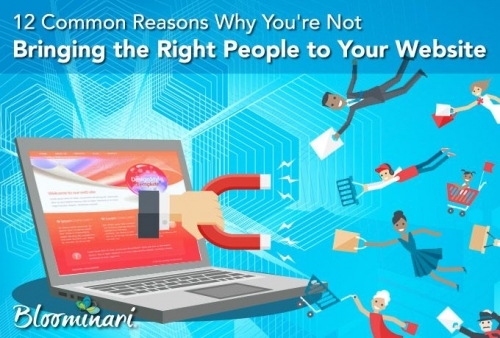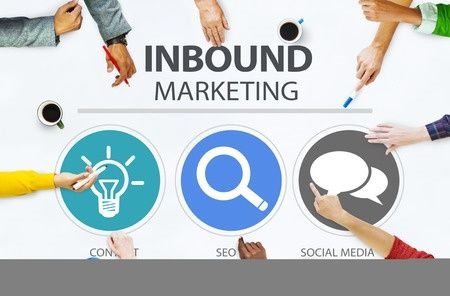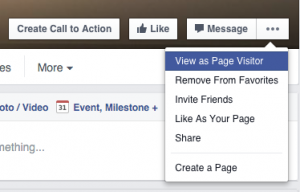— September 9, 2017

Your business has a new, fresh website that you love. And that’s great.
(If you’re not in agreement with that last sentence, click here.)
But your business needs more than just a website. Potential customers have to find your website, feel a need for what you’re selling and ultimately trust your business enough to spend their hard-earned money.
However, the first step, getting people to the website, is perhaps the most critical.

Think of it like fishing: Let’s say you want to catch some delicious trout in a lake.
Option 1: You could drag some nets beneath your boat and catch everything in your path. With this tactic, you’ll use up a lot of resources (especially money) for a poor result. You’d probably catch everything from underwater plants to garbage to all types of fish you didn’t want. Maybe you’ll get a couple trout, but only if you’re lucky, since that tactic lacks a strategy for particularly catching trout.
Option 2: You can buy the appropriate lure, bait and other equipment that will specifically intrigue the trout and get them to bite. Although this tactic takes more planning and know-how, it is the correct way to get the type of underwater creature you desire.
The same goes for your business’s website. You don’t want a ton of people going onto your site if they’re the wrong audience and won’t ever buy. You’re wasting their time and you’re wasting the money you spent on getting the people there. Ideally, you want your target audience (specific demographics who would benefit from your products or services) to visit your site.
Does your business experience any of these problems?
- The business’s website gets a lot of traffic but not enough leads or customers
- The site has very low returning visitor rates
- The site has measly traffic all-together (such as 40 visitors per month)
If so, then your business is probably falling victim to some of these most common online marketing faux pas:
1) The website isn’t mobile-friendly
October 2016 was the first month when more pages on the Internet were viewed on mobile devices, rather than on computers. I hope I don’t have to further persuade you that people are browsing the Internet on their phones. You know this. (If you don’t, go to any crowded, public place and you’ll see what I’m talking about.) So, it’s important to make sure your website is mobile-friendly so that it can be comfortably viewed and navigated via different cell phones, tablets and other devices. What you might not know is that Google’s search engine algorithms punish websites that aren’t mobile-friendly, so that’s another reason to make your website mobile-friendly as soon as possible.

2) The website wasn’t professionally built
You face many serious disadvantages if your website was not built by a professional agency or website developer. First, the site must have proper coding for good SEO, as well as properly-written meta data to also help drive traffic to the site when it comes up in search results. Thoughtful navigation and page layout are also extremely significant features for a high-converting website, because readers must be able to find the information they’re looking for easily, and the website should take them on a brief, logical journey as they read the story of your business, what it sells and why people should buy from you. Having professional pictures, language and a color-scheme that makes sense to the viewers are also critical in keeping the right people on your site.
3) The website’s content and its structure didn’t incorporate keywords
Even if your website was built by a professional, if they didn’t include keywords or other SEO-critical features, then it’s like you paid to place an advertisement but didn’t include any contact information. Your website needs keywords so that people can find it organically on search engines. Keywords not only need to be placed in the text on the website, but especially in the website structure, meaning title tags, alt tags, meta data, etc.
4) Devoid of a functional inbound strategy
If your business lacks an inbound marketing strategy, then your site definitely doesn’t get nearly as many website visitors and leads/customers as you would with one. A functional inbound strategy should incorporate landing pages, social media marketing, online PPC advertising, email marketing and SEO components to drive the right types of people to the website and persuade them to become leads or customers. (If you need help with that, good news, we’d love to help you!)

5) There isn’t a blog or the website doesn’t get new content regularly
If a blog is absent from your site, you’re doing your business a misfortune. Blogs help SEO and can be a key part of an inbound marketing strategy that helps bring new visitors as well as returning visitors to your website. A way to help your website’s SEO without a blog is to regularly update content on your website. Whether that’s adding pictures, changing keywords, altering headings, making new pages, adding videos or case studies – keeping your website fresh and regularly updating it will help attract web crawlers and ultimately move your site up in search results.
6) The home page sucks
Think about the last time you clicked on a link and went to a home page that was just plain awful. You most likely left the website and went to a competitor’s site. There are a lot of reasons why the home page is incredibly important. First of all, it shows that your business is alive and trustworthy. When people see a home page that looks like it was designed in 1995, most (if not all) of the website visitors will leave the website immediately because it looks as though it was abandoned or that the company is no longer in business. No one is going to risk giving their money to a website like that. Secondly, it has the function of introducing your company to the website visitor and gaining their interest. It’s like a storefront but even more important. A website with modern design elements is imperative, along with a home page that briefly explains the business, why its products/services are important or unique and its benefits to the targeted audience. This should be done in a way that keeps the interest of the reader while also providing at least one call-to-action (such as contact us or check out our products) on the home page and other pages.

7) No call-to-actions
Speaking of CTAs, your business website won’t have much luck without them. A website needs to lead visitors through the pages, but it also needs to tell people how to act. For example, on a product page, you should find a couple of pictures of the product, the name of the product, a product description and a “Buy” button or something similar. That is a CTA and they are necessary in order to make a website produce leads or customers. Additionally, your business’s social media posts, online advertisements, email blasts, etc. should all have CTAs that suggest people act a certain way that will ultimately benefit your business.
8) Not offering content in different forms of media
Not everyone likes to read and not everyone is a visual learner. Different people comprehend and retain information in different ways, so it’s beneficial to appeal to as many people as possible by providing content in different forms of media, such as videos, images, graphics, downloadable stat sheets, case studies, etc. By expanding the types of media available, you’re expanding the potential audience.
9) Not utilizing retargeting ads
Only approximately 2 percent of click-through visitors make a purchase on their first visit to a website. That’s because most of Internet traffic is browsing. However, there is a way to market to people when they are ready to buy: retargeting advertisements. These types of online ads remind people of your business when they are ready to purchase. This is a cost-effective online advertising method that increases conversion rates and should be a part of all online marketing strategies.

10) Slow page speed
When a webpage (or, heaven forbid, the whole site) has a slow load time, it not only increases your bounce rate, it also hurts your SEO. It hurts the website’s SEO because site speed and page speed are looked at by algorithms, but furthermore, a slow page speed results in search engine spiders to crawl fewer pages, ultimately hurting the site’s ranking. Additionally, new data shows that 53 percent of mobile site visitors leave a web page that takes longer than three seconds to load. (Even back in 2011, studies found that 47 percent of online shoppers expected a web page to load in two seconds or less.) Test your site for free here.
11) Not taking advantage of PPC (Pay per click) ads
You’re hurting your business if you’re not utilizing Google ads or social media ads. The most basic reason is because you should find where your audience goes online and place advertisements there. Since most people use Google and social media, they make excellent advertising channels. The best part of these types of ads is that they are pay-per-click, which means that you are only paying for people to click through to your website – that’s a great deal. Google ads work through keywords and social media ads work through selective targeting. Think of it this way: if you’re not reaching your customers through PPC ads, your competitors are.
12) No one checks your website’s analytics
If no one is looking at Google Analytics or even analytics within your CMS or CRM software, then how do you know if your website is performing well? How do you know what marketing or sales tactics are bringing people to the site or not; making them fill out the lead capture form or not? The answer is you don’t know. Analyzing your website’s analytical data is something that should be done at least once a month. (My advice is to make sure this is done by someone with Google Analytics experience.)
Digital & Social Articles on Business 2 Community
(134)









